Over 20 years manufacturing experience of Road marking machine and road marking removal machine.
sales@lxdmarking.com+86 15805293662
The Blueprint for a Successful Pavement Striping Project: Key Considerations
Imagine driving down a bustling city street during rush hour, where clear lane markings and well-defined crosswalks ensure safe and efficient traffic flow. This seamless scenario isn't just a pleasant commute; it's a direct result of effective pavement striping. A reliable pavement striping machine is the backbone of executing such high-quality projects efficiently. In this article, we’ll guide you through the essential steps to ensure a successful pavement striping project, from assessing your needs to embracing future trends.
Assessing Project Needs
Before you dive into the project, it's crucial to assess your specific requirements. Start by considering the traffic volume and patterns in the area. High traffic areas may require more frequent and precise markings. Compliance with local safety standards is equally important. Failing to meet these standards can lead to accidents and legal issues. Proper assessment will help you design a project that meets both functional and regulatory needs.
Choosing the Right Pavement Striping Machine
Selecting the appropriate machine is key to the success of your project. Roller machines are reliable for large areas but may wear out faster. Automated pavers offer efficiency but come at a higher cost. Each type of machine has its advantages and disadvantages. For example, roller machines are ideal for flat surfaces and large areas, while automated pavers are better suited for complex shapes and detailed work. Researching popular models and their features will ensure that you choose the right machine for your project.
Preparing the Site
Proper site preparation is the foundation of a successful pavement striping project. Start by cleaning the surface to remove debris and dirt. This ensures that the markings will adhere properly. Next, use specialized tools to mark the area accurately. Ensuring proper lighting is crucial, as visibility can significantly affect the quality of the markings. Common mistakes include poor surface cleaning and inaccurate marking, which can lead to rework and delays. Best practices involve using specialized tools and ensuring surfaces are free from obstructions.
Role of Technology in Pavement Striping
Integrating technology into pavement striping enhances accuracy and efficiency. GPS navigation aids precise marking, especially in complex areas. Real-time data monitoring allows for adjustments during the project, ensuring everything stays on track. Automated marking systems offer consistent results, particularly for large areas. These technologies not only improve project quality but also reduce the risk of human error. For example, using a GPS-guided paver can ensure that lane lines are perfectly straight and consistent.
Execution and Quality Control
Executing a pavement striping project requires attention to detail and strict quality control. This involves following a standardized procedure for applying paint or markings and verifying their consistency with a second person. Compliance with regulatory standards is crucial, ensuring that markings meet safety and functional requirements. Quality control measures, such as verification by a professional, are essential to maintain project integrity. For instance, having a second person check the striping can catch any discrepancies and ensure the final product meets the required standards.
Project Management and Safety Measures
Effective project management ensures that all aspects of the project are executed successfully. Clear communication among stakeholders is vital, avoiding misunderstandings and ensuring everyone works towards the same goals. Safety measures include proper personal protective equipment, clear signage, and safe routes for pedestrians and cyclists. Addressing potential issues, such as bad weather or equipment failure, with a proactive approach, can mitigate risks and ensure a safe project execution. For example, setting up clear signage and warning barriers can prevent accidents.
Case Study: A Successful Pavement Striping Project
This case study highlights a well-executed pavement striping project in downtown Chicago. The project faced challenges such as high traffic volume and uneven surfaces but strategic solutions were implemented, including the use of advanced machinery and meticulous site preparation. The project involved a roller machine for large flat areas and an automated paver for intricate details. Outcomes included improved traffic flow, enhanced pedestrian safety, and significant cost savings. Data and visuals illustrating these achievements provide a compelling overview of the project’s success. For instance, a detailed before-and-after comparison of the area shows the marked improvement in marking accuracy and consistency.
Future Trends in Pavement Striping
Emerging trends in pavement striping include a focus on eco-friendly materials and advanced technologies like AI-driven systems. These innovations aim to reduce environmental impact and enhance efficiency. For example, using thermal paint that dries faster and is more environmentally friendly is gaining popularity. The growing demand for sustainable practices aligns with these trends, making pavement striping a key player in future infrastructure development. Exploring these trends can provide valuable insights into the evolving nature of the industry.
Key Takeaways for Success
Achieving a successful pavement striping project requires careful planning, selecting the right equipment, and attention to detail. By assessing project needs, choosing the appropriate machine, preparing the site meticulously, and adhering to safety measures, you can execute a high-quality project. Additionally, embracing future trends and staying informed about technological advancements will further enhance your project's success. With a well-structured approach and commitment to excellence, you can create a project that not only meets functional requirements but also elevates public safety and traffic flow. By following these guidelines, you can ensure that your pavement striping project is not just successful but also stands out in terms of quality and safety.

